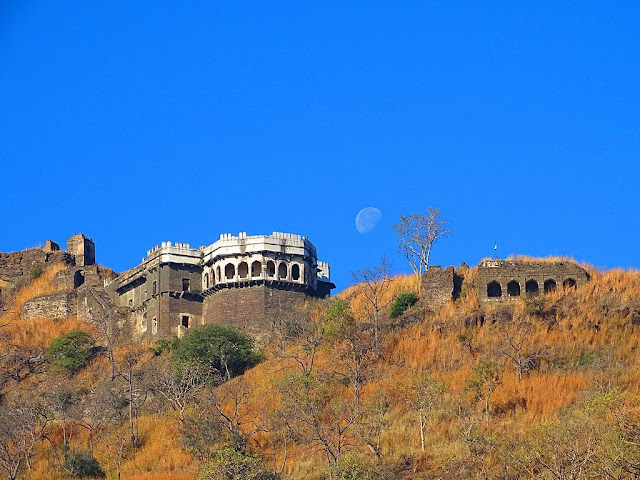Daulatabad Fort, also known as Devagiri or Deogiri, is a historical fortified citadel located in Aurangabad, Maharashtra, India. It was the capital of the Yadava dynasty (9th century–14th century CE), for a brief time the capital of the Delhi Sultanate (1327–1334), and later a secondary capital of the Ahmadnagar Sultanate (1499–1636).
Around the sixth century CE, Devagiri emerged as an important uplands town near present-day Aurangabad, along caravan routes going towards western and southern India. The historical triangular fortress in the city was initially built around 1187 by the first Yadava king, Bhillama V. In 1308, the city was annexed by Sultan Alauddin Khalji of the Delhi Sultanate, which ruled over most of the Indian subcontinent. In 1327, Sultan Muhammad bin Tughluq of the Delhi Sultanate renamed the city as "Daulatabad" and shifted his imperial capital to the city from Delhi, ordering a mass migration of Delhi's population to Daulatabad.
However, Muhammad bin Tughluq reversed his decision in 1334 and the capital of the Delhi Sultanate was shifted back from Daulatabad to Delhi. In 1499, Daulatabad became a part of the Ahmadnagar Sultanate, who used it as their secondary capital. In 1610, near Daulatabad Fort, the new city of Aurangabad, then named Khadki, was established to serve as the capital of the Ahmadnagar Sultanate by the Ethiopian military leader Malik Ambar, who was brought to India as a slave but rose to become a popular Prime Minister of the Ahmadnagar Sultanate. Most of the present-day fortification at Daulatabad Fort was constructed under the Ahmadnagar Sultanate.
Daulatabad Fort was considered the most powerful fort during the medieval period. This fort is believed to be one of the seven wonders of Maharashtra for its exquisite 12th center architecture.
Daulatabad fort is built on a 200m-high conical hill spread across 94.83 hectares, with three encircling walls at equal intervals. The fort was enlarged and structures were added to it later.
The fort changed several hands; from the Mughals, Marathas and Peshwas, to finally the Nizams of Hyderabad in 1724 AD till independence.
It takes nearly 3 hours of walking and trekking to view the complete fort. Reaching the top of the fort requires you to climb 750 steps, though, it's all worth it.
So, do subscribe to our newsletter on the right-hand side for receiving such updates on your email and do follow us on Instagram, Telegram and Twitter for more updates. Also don't forget to like us on Facebook.



